When determining the right mobility aid to enhance individual needs and improve quality of life, one faces the decision between a mobility scooter and a power wheelchair. Both devices are designed to assist individuals with mobility impairments, but they cater to different requirements and lifestyles. It's essential to assess one's needs thoroughly, considering factors such as the degree of mobility restriction, the environment in which the device will be used, and personal comfort with the controls.
Mobility scooters are generally best suited for individuals who retain some level of mobility and require assistance over longer distances. They are typically larger, equipped with a tiller and handlebars, and are often used outdoors. Power wheelchairs, on the other hand, are more versatile for indoor use and for those with severe mobility limitations who may need to use their chair around the clock. Operated by a joystick, power wheelchairs tend to be more maneuverable in tight spaces.
The choice between a mobility scooter and a power wheelchair is a critical one, impacting an individual’s autonomy and ease of mobility. Each type of device has distinct features and operational requirements that will match different daily routines and physical conditions. Careful consideration of the user's physical capabilities, the need for customization, and lifestyle can inform a choice that aligns with their goals for enhanced mobility and improved quality of life.
Understanding Mobility Scooters
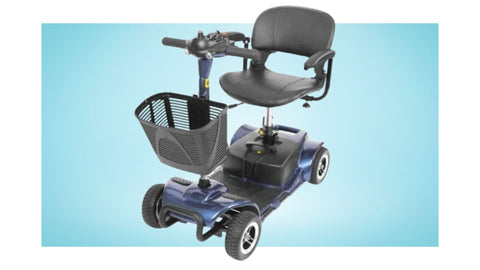
Mobility scooters provide individuals with mobility impairments the opportunity to regain independence and navigate various environments with ease. These devices excel in outdoor terrain and come with a range of features and customization options to suit different needs.
Basics of Mobility Scooters
Mobility scooters, also known as electric scooters, are battery-powered devices designed for individuals who can walk a few steps but struggle with longer distances. They are typically equipped with three or four wheels, a seat, and a steering tiller, often referred to as handlebars.
Design Features
The design of mobility scooters prioritizes comfort and efficiency. Models come in various sizes, from compact to larger framed units capable of handling rougher terrain. Larger wheels and a sturdy base enhance stability outdoors.
Benefits for Outdoor Use
Mobility scooters are optimized for outdoor use, featuring durable tires and sufficient battery life to tackle diverse terrains and inclines. Outdoor models usually have enhanced suspension systems for a smoother ride and greater support for stability.
Scooter Maneuverability
The turning radius of scooters is a crucial aspect of their maneuverability. Those designed for indoor use typically have a smaller turning radius, making them more agile in tight spaces, while outdoor models may require more room to turn.
Transportation of Scooters
Transporting a mobility scooter is made easier with portable or foldable designs. Some can be disassembled into parts, allowing for placement in vehicle trunks or storage spaces. These portable options enable users to maintain mobility across various locations.
Customization Options
Scooters offer various customization possibilities, from color options to accessory attachments. Users can personalize their scooters with items like additional baskets, custom seat covers, and more to fit their lifestyle and preferences.
Safety Considerations
Safety in mobility scooters encompasses stability to prevent tipping and features like anti-tip wheels. Adequate lighting and reflectors are essential for visibility, while an adjustable tiller ensures proper ergonomics to prevent strain.
Cost and Insurance
The cost of mobility scooters can vary, ranging from affordable to higher-priced models loaded with features. Some scooters may be covered by Medicare, private insurance, or other forms of reimbursement, depending on the user's policy and the scooter's intended use.
Exploring Power Wheelchairs

Power wheelchairs offer a versatile and dependable solution for individuals with mobility challenges. They are designed to enhance movement with ease indoors and to provide a comfortable experience during transport.
Fundamentals of Power Wheelchairs
A power wheelchair, also known as an electric or motorized wheelchair, is a chair with wheels that is propelled by an electrically based power source, typically batteries. Power wheelchairs are engineered to cater to the needs of individuals requiring full-time mobility assistance.
Electric Wheelchair Controls
The primary control mechanism of a power wheelchair is a joystick positioned on the armrest, allowing for precise control over speed and direction. This enables the user to navigate the chair with minimal effort and to adjust the speed according to their comfort and safety requirements.
Indoor Maneuverability
For indoor use, power wheelchairs excel with features like a tight turning radius and narrow width, making them ideal for navigating through tight spaces such as hallways and door frames. Their compact size and ability to pivot in place simplify the user's mobility indoors.
Comfort and Seating
Comfort in a power wheelchair is paramount, with options like vinyl seating or padded cushion seat cushions. Enhancements include height-adjustable seats and captain's style seating, which provide support and improve posture.
Transport and Storage
When considering transportation and storage, many power wheelchairs offer a compact design. Some models can be folded or disassembled without tools, making them convenient to transport in vehicles or to store when not in use.
Custom Features and Accessories
Power wheelchairs can be highly customizable to fit personal needs. Users might add accessories like a storage basket or an adjustable foot platform. Added features enhance the user’s autonomy and convenience for daily tasks.
Safety and Stability
Safety aspects of power wheelchairs include advanced suspension systems and shock absorbing tires that contribute to stability and a smooth ride. These features are crucial, especially when navigating uneven outdoor terrain or obstacles.
Comparing Mobility Solutions
Selecting the correct mobility aid can significantly affect an individual's independence and quality of life. This section will compare mobility scooters and power wheelchairs, revealing their suitability based on terrain, user needs, speed, navigability, and other vital factors to consider.
Mobility Scooter vs. Power Wheelchair
Mobility scooters are ideal for individuals who can stand and walk short distances but require assistance for longer distances. They typically have three or four wheels and are steered using handlebars, similar to a bicycle, making them suitable for outdoor use and long-range travel.
Power wheelchairs, on the other hand, cater to those with minimal upper body strength and dexterity. They are controlled by a joystick for precise movement and can have four to six wheels, with varying drive systems that influence their maneuverability.
Choosing Based on Terrain

For navigating over varied outdoor terrain, mobility scooters are often the better option due to their larger wheels and elevated clearance. In contrast, power wheelchairs may offer enhanced stability with mid-wheel drive systems that make smooth and level terrain, like indoor environments, more accessible.
Considering User Needs
Each user's individual needs are paramount when choosing between the two. A mobility scooter is more dependent on the user's arm strength for steering, while a power wheelchair may be better for those requiring full upper body support and comfort with different seating options available.
Speed and Range Considerations
Comparing speed and range, mobility scooters usually provide a higher speed and cover longer distances on a single battery charge. Power wheelchairs might offer a lower range due to their designed purpose for intricate maneuvering rather than extended travel.
Navigating Through Tight Spaces
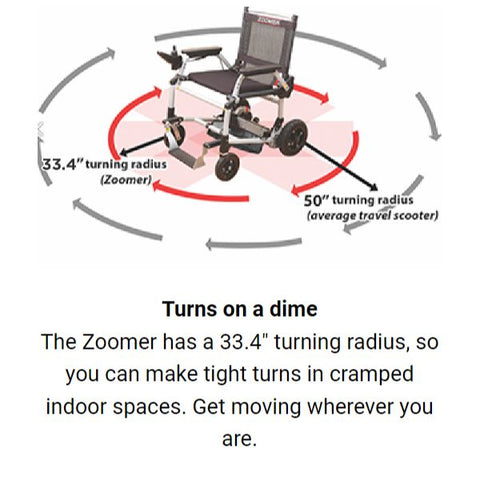
Power wheelchairs typically have a smaller turning radius and are more compact, ideal for maneuvering through tight spaces within homes or public buildings. Mobility scooters can be bulkier, hence might not be as efficient in areas with limited space.
Weight Capacity and Size
The weight capacity and size of the mobility aid are crucial. Mobility scooters usually support larger weight capacities, while power wheelchairs might offer more varied model sizes to accommodate different body types. It's essential to consider the user's physical attributes and the dimensions of the mobility aid itself for a suitable fit.
Purchasing and Ownership
When considering a mobility scooter or power wheelchair, prospective buyers must navigate assessments, insurance policies, and the realities of maintenance, all while focusing on how these devices will enhance independence and quality of life.
Assessment and Trials
Before purchasing a mobility device, one should undergo a face-to-face examination to assess their individual needs. A thorough trial period, including a test drive of the device, ensures that the chosen mobility aid complements the user's lifestyle and environmental challenges.
Insurance and Medicare Policies
Insurance and Medicare can play pivotal roles in financing a mobility device. They often require a face-to-face examination and a detailed written prescription from a healthcare professional. Private insurance policies vary, so it’s crucial to verify coverage and understand the extent of reimbursement for mobility devices.
-
Medicare Part B may cover power wheelchairs and scooters as durable medical equipment (DME) if deemed medically necessary.
-
Typically, the user pays 20% of the Medicare-approved amount, after the yearly Part B deductible.
Maintenance and Repairs
The reliability of a mobility device hinges on regular maintenance and timely repairs. Users should familiarize themselves with service terms and locate qualified technicians. A maintenance checklist includes:
-
Battery checks: Ensure optimal power and life span.
-
Tire inspections: Assess for wear and proper inflation.
-
Motor and brakes: Routine checks for safety and performance.
Empowering Independence
Above all, the primary goal is to empower users through enhanced independence and freedom. The right mobility aid can significantly improve quality of life by accommodating an individual’s needs for movement and accessibility, fostering a sense of autonomy.
Adaptive Equipment and Alternatives
The realm of adaptive equipment offers various solutions for individuals with mobility challenges. From manual wheelchairs to enhanced comfort features, each alternative serves a specific purpose tailored to individual needs, focusing particularly on stability, maneuverability, and safety.
Manual Wheelchairs and Their Uses
Manual wheelchairs require upper body strength for operation, making them suitable for individuals with good arm strength. They offer a dependable mode of mobility and are often used for both indoor and outdoor activities, serving as a primary mobility aid for many.
-
Stability: Predominantly comes with four wheels, ensuring a sturdy base.
-
Maneuverability: Compact design allows for easier navigation in tight spaces.
Assistive Devices for Additional Support
When additional support is needed, assistive devices such as canes and walkers can complement the use of wheelchairs. They support balance and stability during transfers or short ambulations.
-
Walkers: Provide sturdy support and improve balance.
-
Canes: Assist with stability during walking for those with partial weight-bearing abilities.
Choosing Between Four-Wheel and Six-Wheel Models
Mobility aids with four to six wheels cater to different stability and maneuverability needs. Four-wheel models are standard, offering a balance between the two, whereas six-wheel models prioritize stability.
-
Four-Wheel Models: Optimal for general use with a good mix of stability and maneuverability.

-
Six-Wheel Models: Enhanced stability, ideal for uneven terrain or those with significant balance impairments.
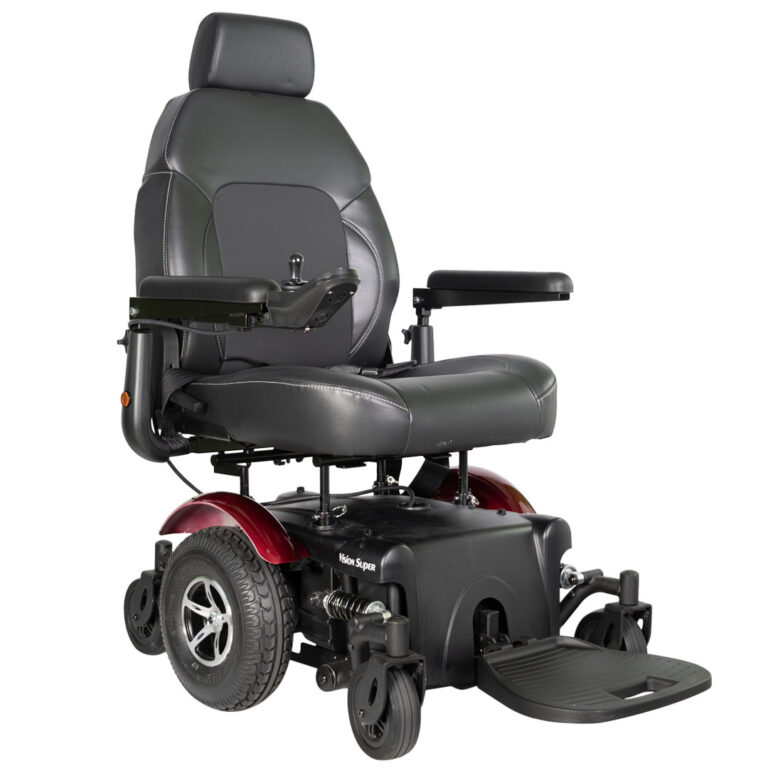
Enhancements for Comfort and Safety
Adaptive equipment can be tailored with various enhancements focusing on comfort and safety:
-
Comfort: Features like padded headrests, swivel seats, and adjustable leg rests can significantly increase comfort during prolonged use.
-
Safety: Ensuring proper leg room and secure seating can prevent injuries and provide a safer experience.
Frequently Asked Questions
Choosing between a mobility scooter and an electric wheelchair can be influenced by understanding their individual benefits, transportation considerations, and functional limitations. This section addresses common inquiries to guide users in making informed decisions about their mobility aids.
What are the primary benefits of using an electric wheelchair over a mobility scooter?
Electric wheelchairs are typically more compact and maneuverable than mobility scooters, making them ideal for indoor use and navigating tight spaces. They often have a joystick control, allowing for one-handed operation, which is beneficial for users with limited dexterity.
Can mobility scooters be easily transported compared to power wheelchairs?
Mobility scooters, especially those with three or four wheels, might not be as easily transportable as foldable or travel-approved power wheelchairs. The latter are often designed to be more compact and may be TSA approved, making them suitable for airline travel.
What limitations should one consider when choosing a lightweight mobility scooter?
Lightweight mobility scooters often have a reduced range and weight capacity compared to more robust models. They may also offer less stability, which could be a concern for users requiring a more secure mobility solution.
For what reasons might a person prefer a power wheelchair despite the potential benefits of mobility scooters?
Individuals might prefer a power wheelchair if they require a higher degree of stability, need full-time mobility assistance, or have specific postural or medical needs. Power wheelchairs typically offer more seating options and support customization to fit the user's requirements.
How does the functionality of a mobility scooter compare to that of a foldable power wheelchair for travel?
Foldable power wheelchairs are designed to be easily collapsed and transported, making them a convenient option for travel. Mobility scooters, while offering a more open and less restricted seating position, might not fold as compactly and could be more cumbersome to load into vehicles or check on flights.
What factors should be considered when deciding between purchasing a new mobility aid or opting for a rental?
When deciding whether to purchase a new mobility aid or rent one, individuals should consider the duration of their need, cost-effectiveness, and the specific features required for their physical condition and lifestyle. Rentals may be a good solution for short-term use, while purchase is generally better for long-term requirements.
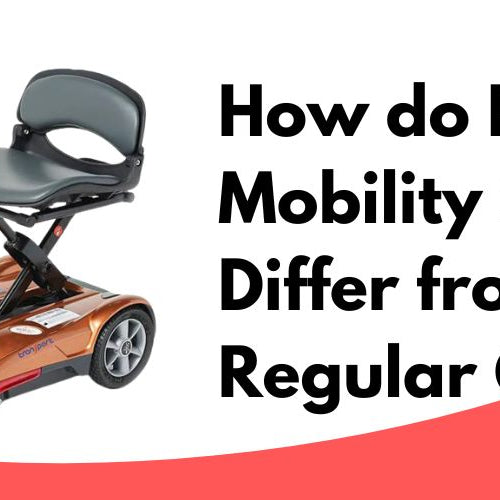









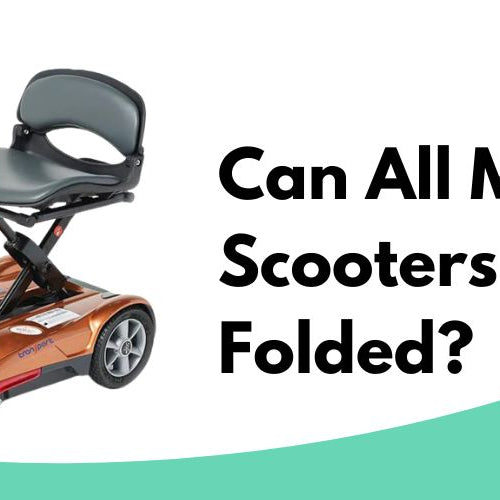
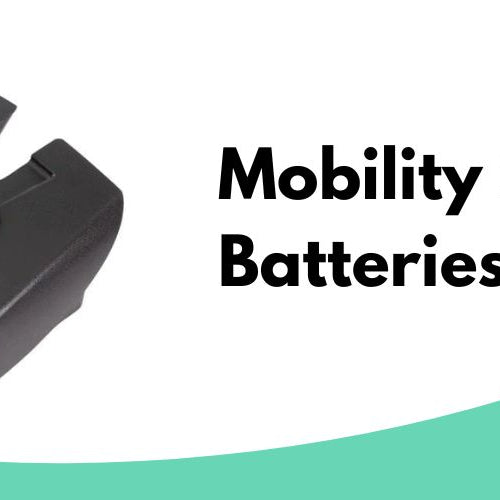
Leave a comment